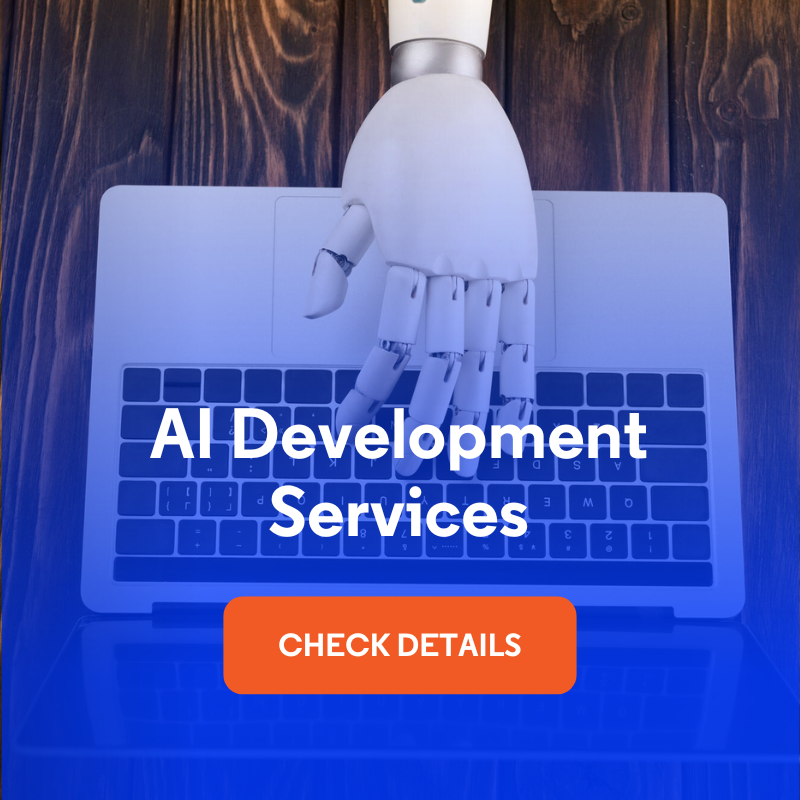
How to Generate Image Alt Text and Content Strategy with AI Modules in Drupal?
Artificial intelligence is revolutionizing the way we manage content in CMS systems. Drupal is not lagging behind and offers more and more AI modules to automate editorial processes. In this article, I will present four of the latest AI-powered solutions for Drupal that can significantly improve content work and project management. This post is based on my video from the Modern Drupal channel.
In this article:
- AI Image Alt Text - automatic image descriptions when uploading
- AI Automators - intelligent content field management
- AI Content Strategy – content strategy generator
- Integration of the AI module with the ECA module – the future of automation
- Impact of AI modules on the future of content management
AI Image Alt Text - automatic image descriptions when uploading
The first of the Drupal AI modules that deserves attention is AI Image Alt Text. This tool automatically generates alternative text for images when they are uploaded to the system. This functionality is particularly valuable from the perspective of website accessibility and SEO optimization.
The module offers two main functions:
1. Automatic alt text generation for new images during upload. When an editor uploads a new photo to the system, artificial intelligence analyzes its content and creates an appropriate text description.
2. The ability to generate descriptions for all existing images in the system that do not yet have alternative text, using the additional AI Image Bulk Alt Text module. The module adds the Bulk Generate Alt Text option in the Configuration section of the Media section, where you can check the status of images without alt text.
In the configuration of the basic AI Image Alt Text module, there is a page with many customization options. There, you can place your own prompt for generating alt texts, which allows you to precisely define the style and character of image descriptions. You can also enable the option to auto-generate alt text when uploading each new photo and select any AI model from the third-party AI providers connected to the CMS. These settings allow you to fully customize the process to the needs of a specific project.

After uploading a photo to the system, a characteristic progress indicator (spinning circle) appears, and then a description of the uploaded image is automatically generated in the alt text field. The module also handles images that already exist in the system – it can analyze their descriptions and generate alternative versions for them. The quality of the generated alt tags may vary depending on the complexity of the image and the AI model used, but the module lets the editors validate text and make corrections.
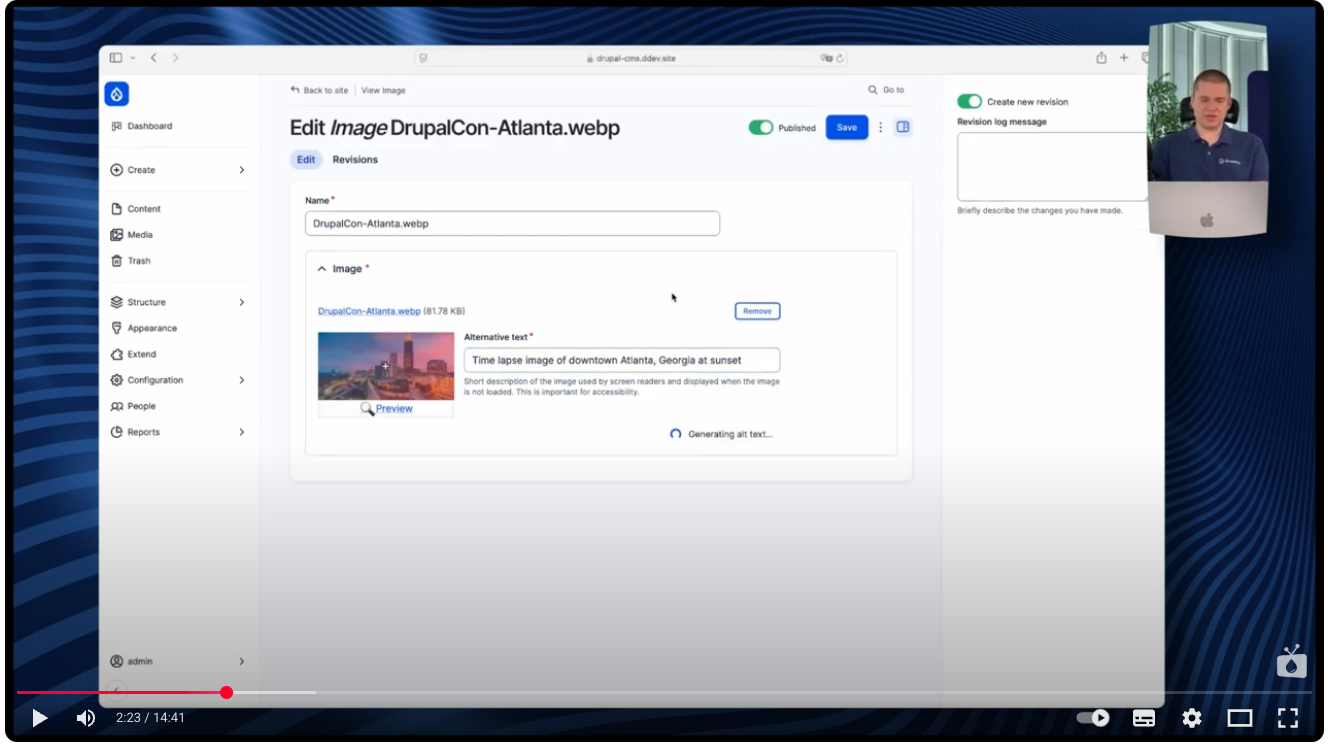
AI Automators - intelligent content field management
AI Automators (a submodule in the AI module) is a much more advanced tool that allows you to automatically generate or modify field values in different types of content. The module can be used to create article descriptions, summaries, tags, or even to moderate content.
The module is configured at the content type level. We can add automatic fields to any content type and configure how AI should fill them in. In the settings, we can specify the prompt, the number of words, and indicate which fields should serve as context for generating new content.
A practical example of its use shows the automatic generation of a description for a blog post. We select the Enable AI Automator option and choose LLM Text in the Choose AI Automator Type field. We enter the prompt. We can set it to write a summary of up to 60 words instead of 130 (as suggested by default). In the Automator Base Field, we select Content, i.e., the field with content from CKEditor, which we will fill in in the next step.
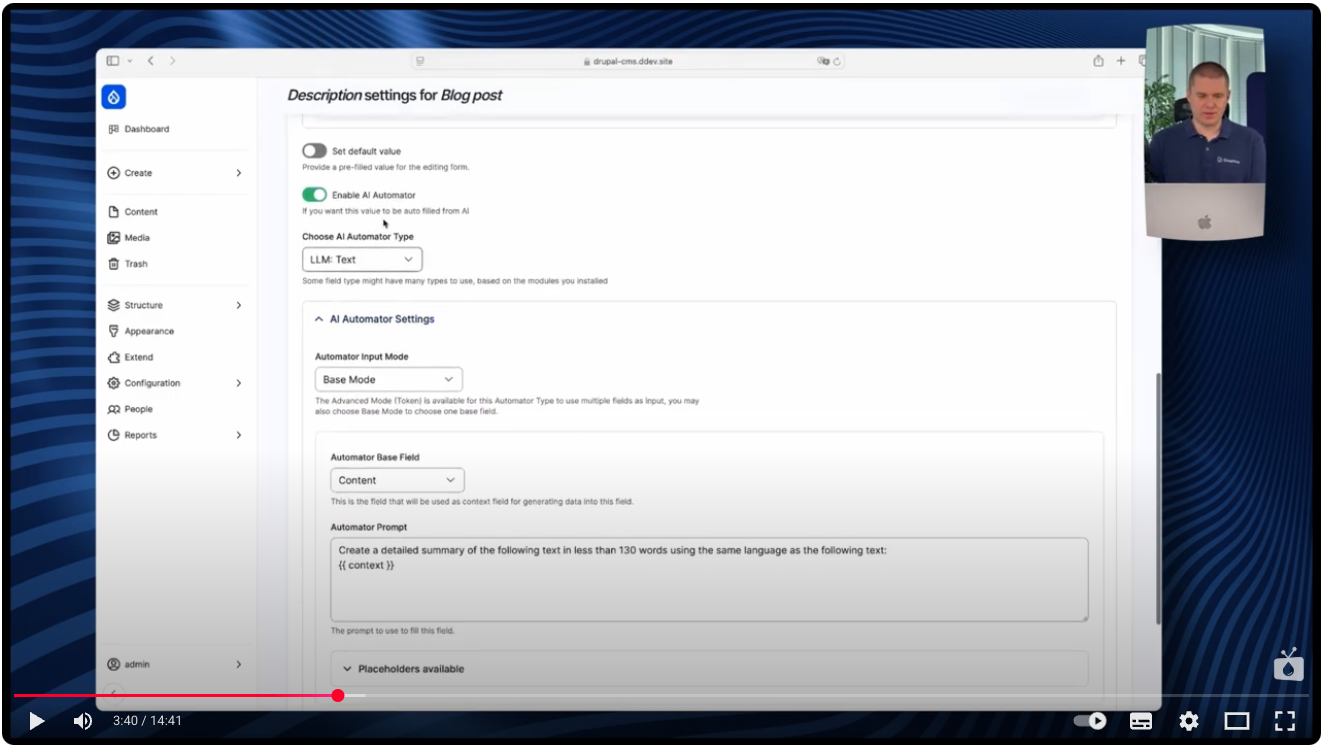
We move on to adding a blog post. In the Content field, we click on AI Assistant, an AI CKEditor plugin, which we use to generate content. Then we save, and when we return to the Create blog post view, we leave the Description field blank. We mark the blog post as published and save the changes.

After going to the Blog tab, we can see our new post. When we enter edit mode, we can see the generated text in the Description field.
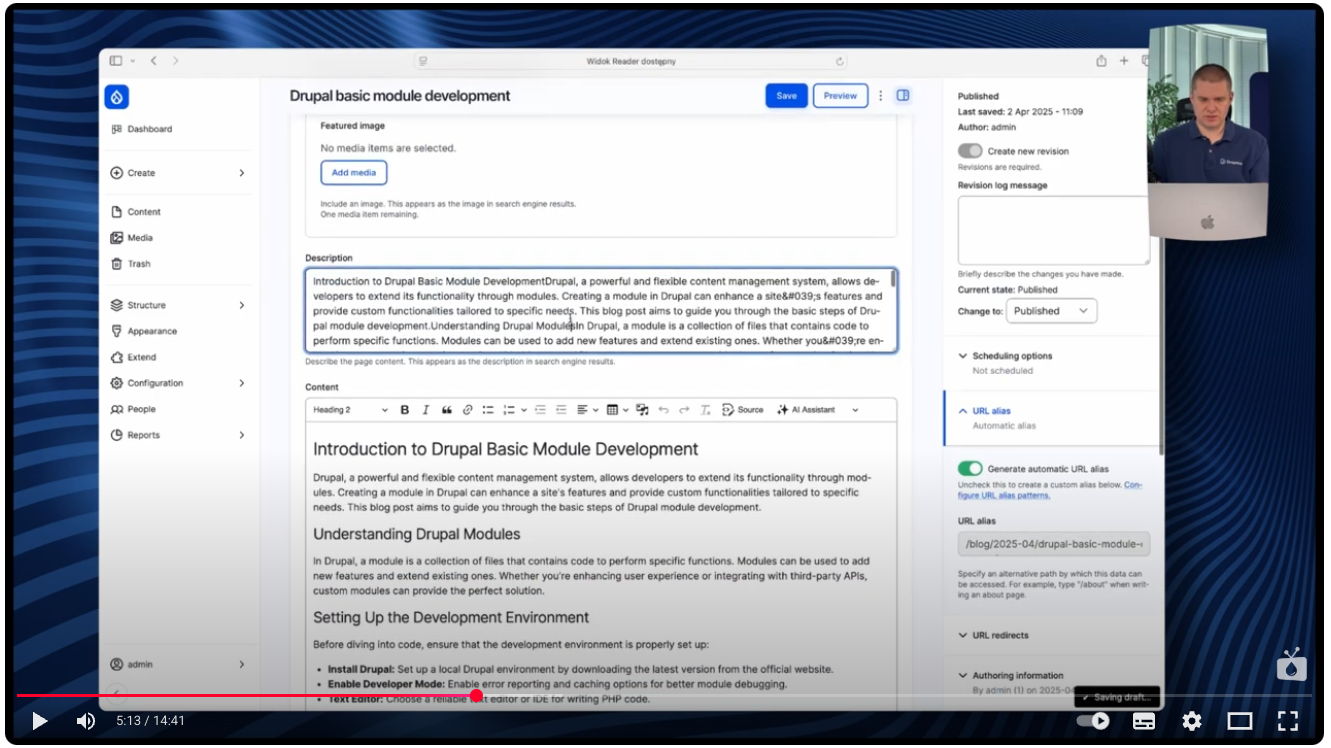
AI Content Strategy – content strategy generator
AI Content Strategy is a module that analyzes existing content on the Drupal site and uses it to prepare recommendations for new articles to write. This tool is particularly useful for editorial teams planning their content strategy.
The module adds a Content Strategy link in the Drupal reports section. After going to this section, we will find a button to generate reports. The system uses the existing content of the website and its structure to prepare suggestions for further materials.
Based on basic materials about Drupal development and similar topics, AI generated recommendations, grouped by priority. The suggestions included "security best practices," "advanced module development," and suggestions to add videos or case studies to the Drupal site.

A particularly interesting feature is the ability to further develop a selected topic path. If, for example, we like the path for beginners, we can generate even more content in this direction. The system allows for iterative expansion of the content strategy based on selected topic areas.
The module integrates perfectly with the content creation process. After receiving a recommendation, simply go to the blog post section and use the Generate with AI option. The system automatically generates content for the page based on a previously prepared content strategy.
AI Content Strategy also works with the AI Content Suggestion module, which was shown in my previous video. This allows you to use the option on the right side of the editing interface to generate an attractive title for your article. The system can also generate tags based on content, as I showed in detail in the video.
The result of such automation is the ability to create a complete article, where artificial intelligence generates the idea for the content, the content itself, the description, the title, and the appropriate tags. For many editorial offices, this can mean a dramatic acceleration of the content creation process and the automation of many repetitive tasks related to publication planning.
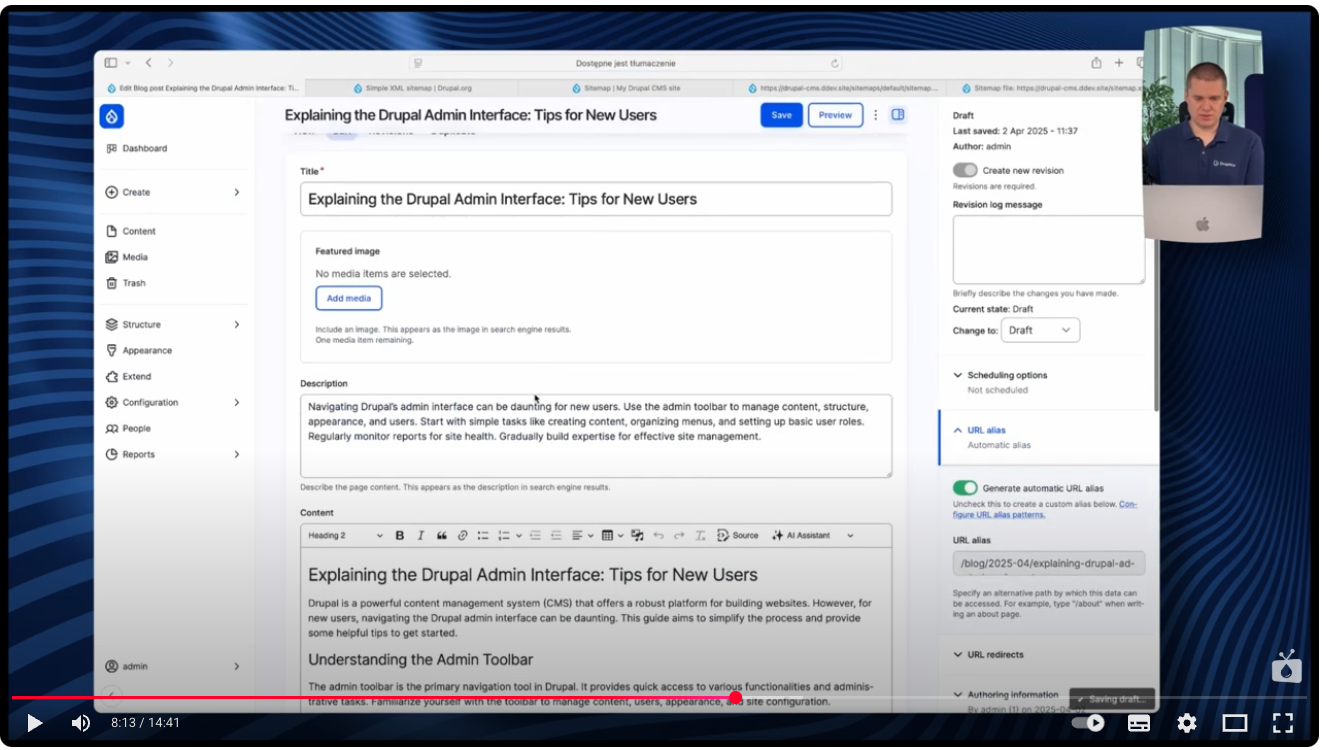
Integration of the AI module with the ECA module – the future of automation
The most advanced feature is the integration of the AI module with ECA (Event Condition Action). This combination opens up new possibilities for process automation in Drupal through natural language queries. Please note that the features presented work in Drupal CMS, but the AI module and AI Agents are in the developer version, so you need to download them yourself if you want to experiment with them.
ECA is a module that allows you to create automation without writing code, using a visual interface. Ready-made ECA models are already available in Drupal CMS, such as redirecting logged-in users after logging out, options for creating duplicate content, or building a registration form. It is quite possible that many of the features currently implemented by contrib modules will soon be transferred to ECA models.
The most important of the new AI-powered features is the Ask AI button that appears in the ECA interface. This feature allows you to explain how existing models work and create new automations by describing them in words.
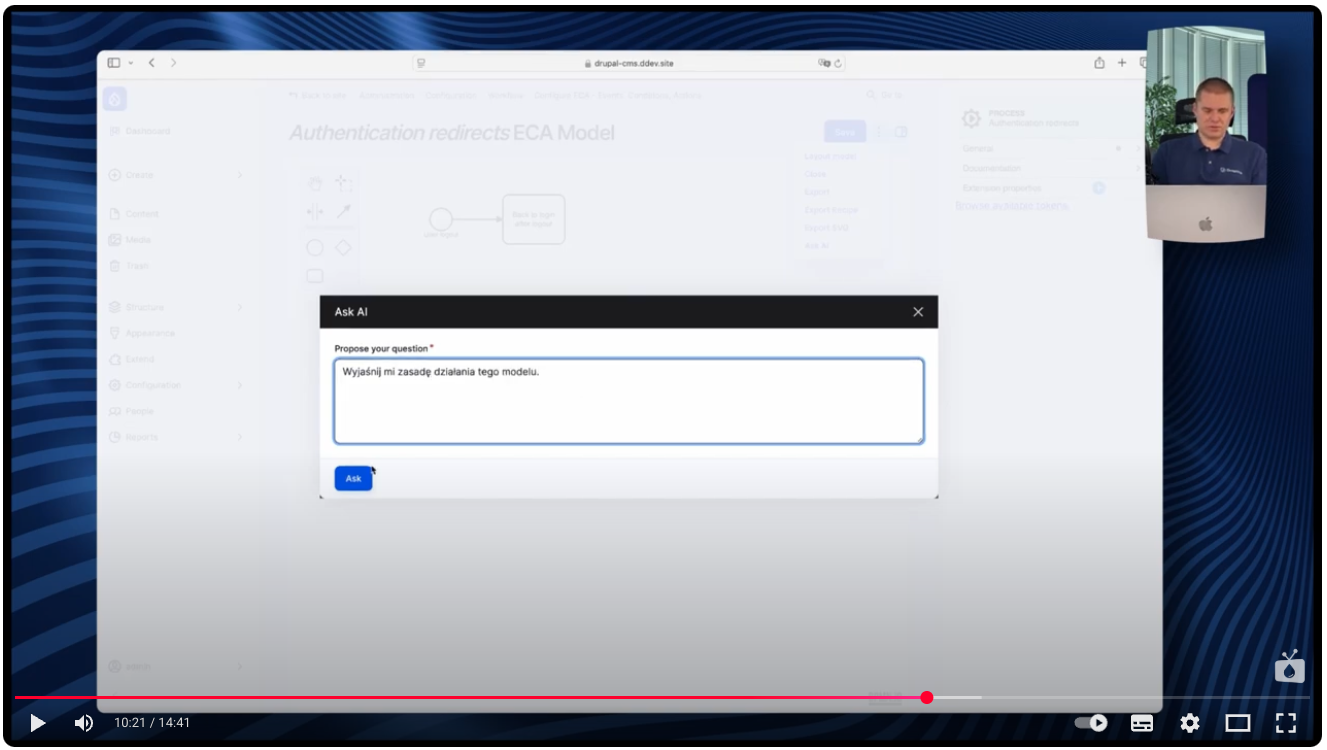
Analysis of existing ECA models
Now we will see an example of use on a simple model. After clicking the Ask AI button and entering the query "Explain the principle of operation of this model," the system analyzes the selected model and provides a detailed explanation. The generated description can be copied and saved in the documentation of this process.
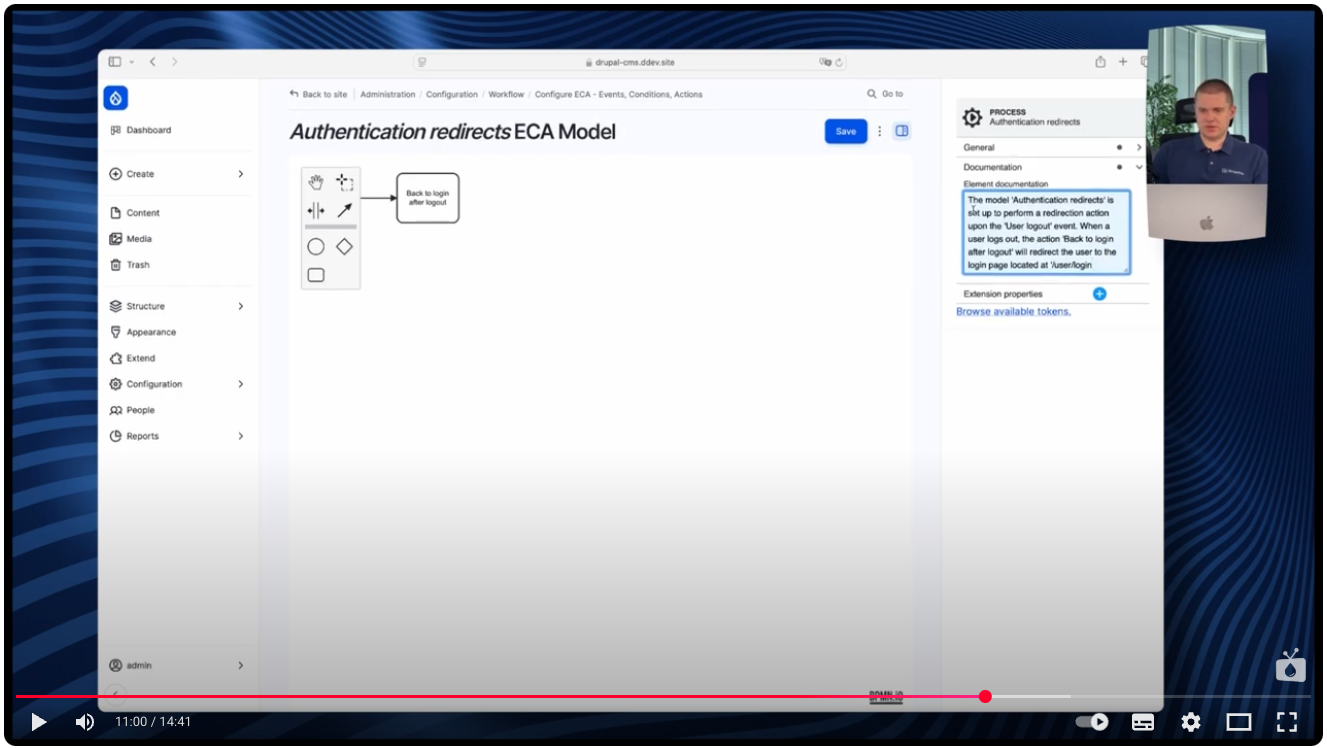
The system can also handle much more complex models, but as this is a developer version, it may still contain errors.
Creating new models through verbal description
We can create a new ECA model by providing a verbal description. In the Ask AI option, we type "Please create a new model. It should register every change in config and save the information in Log Message with information about current user and config name." After creation, the new model is always disabled. We enable it by pressing the Enable button. We enter edit mode and see the Save config, Current user token, and Message elements.
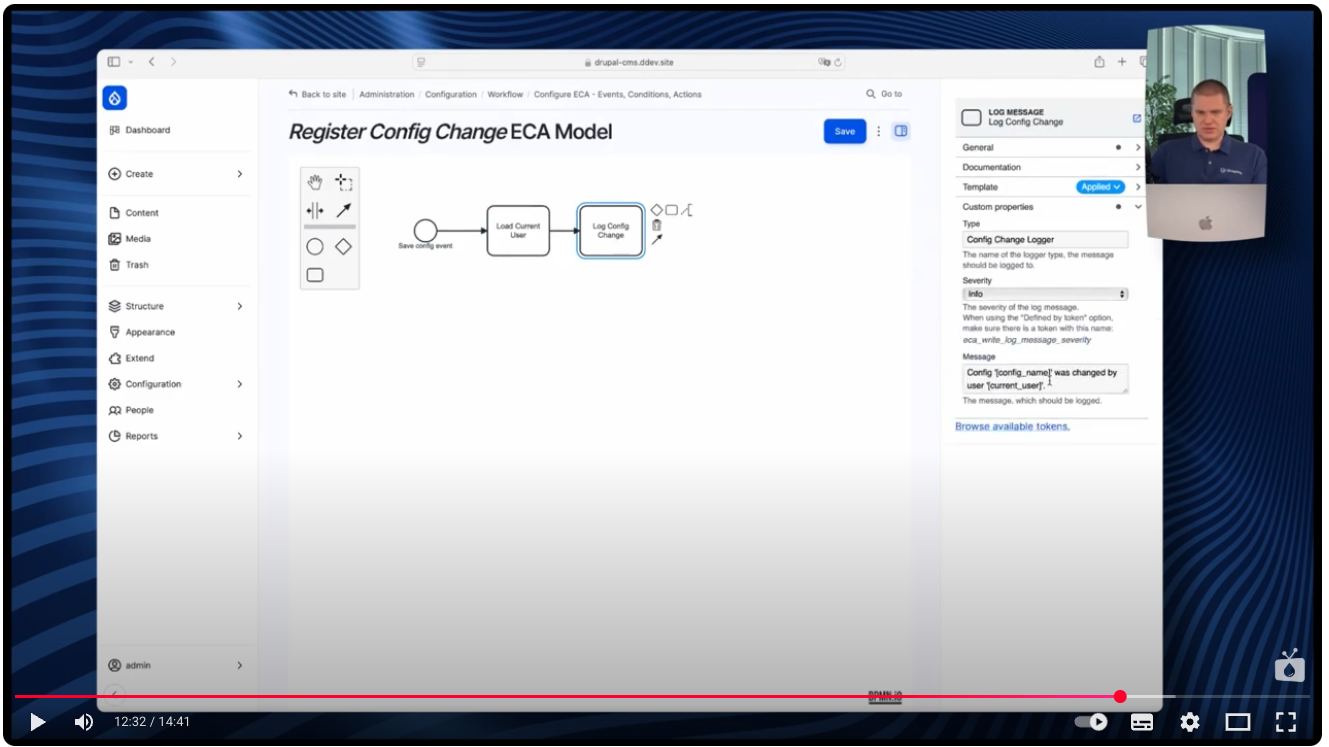
To test the model, we can:
- Go to the system configuration and make a change, e.g., in Basic site settings.
- Change the name of the site (e.g., from "Modern Drupal" to "Modern Drupal 2025").
- Save the changes.
- Go to Recent log messages.
The logs show the entry: "Config 'system.site' was changed by user 1," which confirms that the automatically created model called Config Change Logger is working correctly.
Development prospects
If this is done well and the artificial intelligence reads correctly, creates these configs, and understands existing models, creating new functionalities in Drupal with AI and the ECA module will be super easy and fast.
This technology can revolutionize the way functionality is created in Drupal, making advanced automation available to people without programming skills. All you need to do is describe in words what a given function should do, and the AI will create the appropriate ECA model with the right conditions and actions.
Impact of AI modules on the future of content management
The AI Image Alt Text, AI Automators, AI Content Strategy modules, and the integration of the AI module with ECA show how artificial intelligence can be put to practical use in everyday work with Drupal. Each of the modules presented solves specific editorial problems and offers measurable benefits - lets you save time and improve your content quality.
If you are considering implementing AI solutions in your Drupal project or need help configuring the ECA module, we can help. We offer consultations on integrating artificial intelligence with content management systems and implementing specific solutions.

